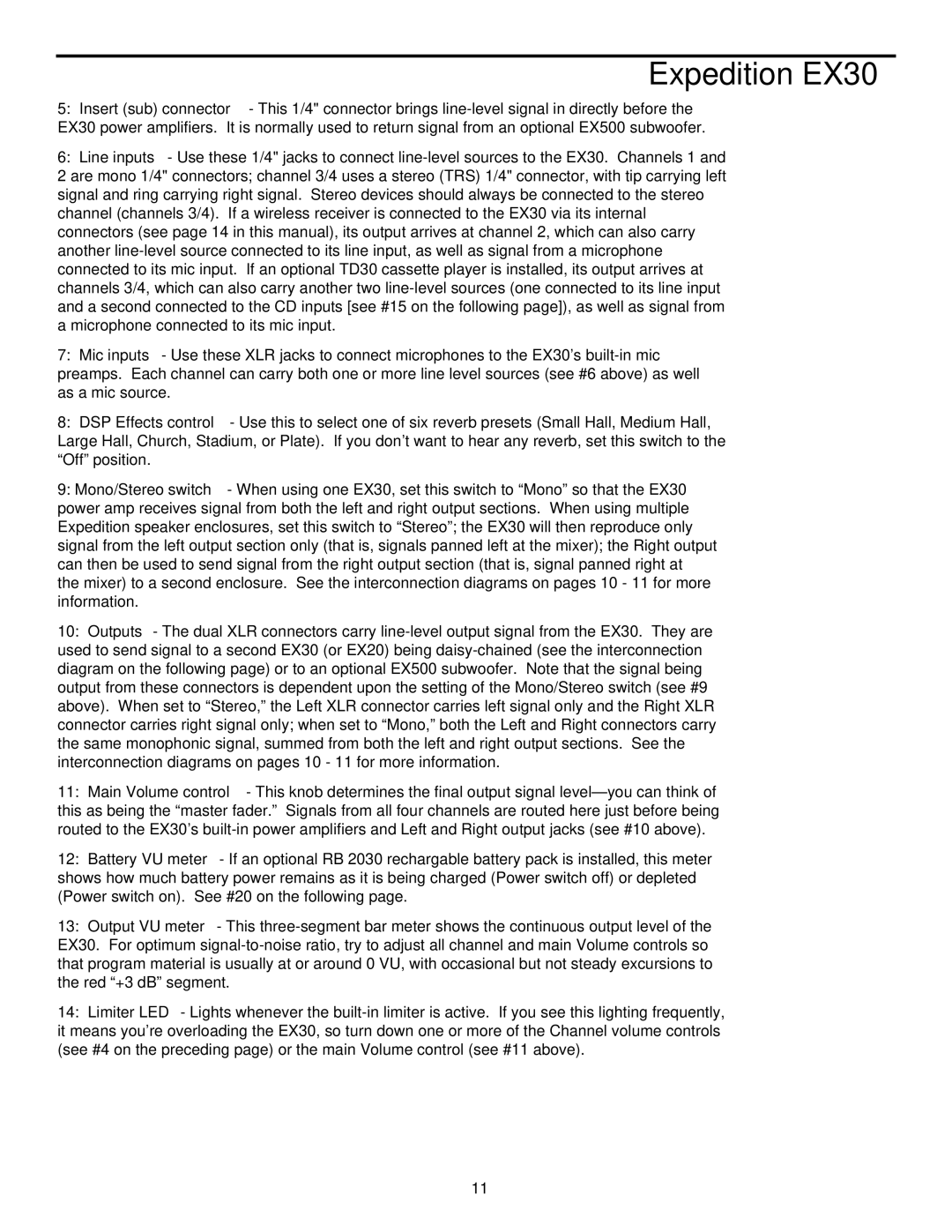EX10, EX30, EX20 specifications
The Samson EX series, consisting of the EX30, EX10, and EX20 models, is renowned for its superior audio performance and durability, making it a popular choice for music professionals and enthusiasts alike. Each model in this series boasts unique features, technologies, and characteristics designed to cater to various audio needs.The EX30 represents the pinnacle of excellence in this lineup. It is engineered with advanced DSP technology that enhances sound clarity and fidelity. This model is equipped with a high-power amplifier that delivers exceptional output while maintaining low distortion levels. The EX30 features multiple input options, supporting both XLR and TRS connectors, making it versatile for different setups. Its robust build quality is complemented by a sophisticated cooling system, ensuring consistent performance during extended use. Additionally, the EX30 includes a comprehensive EQ section, allowing users to tailor their sound precisely to their preferences.
The EX20 strikes a balance between power and portability. This model shares many of the advanced features of the EX30 but is designed to be more compact, making it ideal for mobile setups and smaller venues. The EX20 also utilizes high-performance drivers that ensure a dynamic range, suitable for both vocal and instrumental applications. With its rugged construction, this model is built to withstand the rigors of on-the-road use, while its user-friendly interface makes it accessible for both novice and seasoned audio professionals.
Lastly, the EX10 serves as an entry-level option within the lineup without compromising on quality. The EX10 is perfect for those transitioning into professional audio setups. It incorporates essential features such as an efficient power amplifier and versatile connectivity options. This model is lightweight, allowing for easy transportation, yet it still delivers crisp and clear sound, making it suitable for small performances, rehearsal spaces, or home studios.
In summary, the Samson EX series, including the EX30, EX20, and EX10, showcases a commitment to innovation in audio technology. Each model provides a range of features tailored to meet diverse audio demands, from advanced signal processing in the EX30 to the portability of the EX20 and the accessibility of the EX10. Together, they represent a comprehensive solution for anyone seeking high-quality sound reinforcement.
